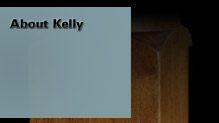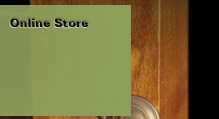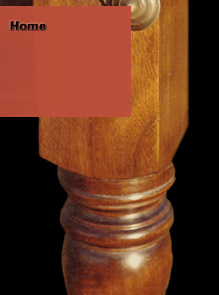





Garrett Hack's Cabinet Curiosities - Tools, Materials & Class information
TOOL LIST:
* Set of bench chisels 1", 3/4", 1/2", 1/4" - the more sizes the better. I have no favorite chisels, but the blue handled Marples are adequate and inexpensive. So are the shorter Ashley Iles (Toolsforworkingwood.com) and the new Lie-Nielsen chisels. If you are curious about Japanese tools, buy a couple of chisels to try. A collection of flea market chisels is fine - and you might find some beauties.
* Mallet make one if you can't find one you like. The standard hammer type is okay, or a round one shaped like half a rolling pin.
* Fine bladed marking knife Less than a buck and widely available, retractable plastic knives with breakoff blades are great.
* Pencil I find a lumber crayon also very useful for bold marks that help prevent careless mistakes.
* 12" - 24" straight rule accurate enough to be also used as a straight edge.
* 4" or 6" and/or a 12" square An adjustable square is fine - the blade is a useful straight edge - but so is a fixed square. I carry a 6" square in my pocket for many uses besides checking squareness. Buy the best square you can afford; my first choice for any precision measuring tool is a Starrett.
* Mortising or marking gauge Marking gauges have a single pin, mortising gauges two. Some gauges do both - the beam has two pins on one side and one on the other. Fancy rosewood isn't important, but check that it feels good in your hand (balanced) and locks positively. A wheel gauge such as one from Veritas is very good for a single line, although I prefer traditional knife shaped marking pins.
* A #4 and/or #5 bench plane. Some of you will prefer a smaller plane such as a #3, or a wider #4-1/2. This is a tool that you will rely on constantly for a whole range of smoothing, cutting bevels, jointing short surfaces, and on and on. The least expensive are Record or flea market finds. Avoid Stanley Handyman and cheaper planes - they will be constant frustration. Older Stanleys can be very good, and work even better with a thick replacement iron (Hock or Lie-Nielsen). If you can afford them Lie-Nielsen makes superior tools that need little tuning and feel wonderful right out of the box. Buy iron not bronze. Lee Valley and Clifton make good planes for less money. Lee Valley (Veritas) lack the frills but more than makeup for it with superior performance. A couple of bench plane sizes is a plus; one can be tuned as a smoothing plane, the other for general work.
* Low angle block plane The Stanley and Record will work, but the Lie-Nielsen #60-1/2 (adjustable mouth block plane) is far far superior. They also make a low angle (#102) for less money, but it is not as versatile as the larger #60-1/2. If you buy yourself only one new tool for the class, make it the L-N #60-1/2 low angle.
* Shoulder rabbet plane Stanley #92, #93 are good if you can find old ones, as is the new Veritas. Buy their medium sized shoulder rabbet. Clifton and L-N also makes some nice planes. Don't buy a big plane, they are unwieldy, nor a specialized "bullnose" rabbet, with a very short front sole (#90). The L-N rabbet block plane will work for cutting shoulders, and is useful for other tasks.
* Hand (card) scraper (or the #80 cabinet scraper if you prefer). I prefer thicker scrapers over the very flexible thin ones. One should last nearly a lifetime. Sandvik, or L-N.
* Burnisher oval or triangular, for tuning scrapers. I made mine out of old files. The school probably has a few.
* Fine toothed dovetail or small backsaw $14 saws are fine; we'll tune them if need be, so they work better than you can imagine. Chose a straight handled "Gent's saw" or a "D" type handle. Lie-Nielsen makes fine saws with shapely handles for a lot of money, as do plenty of other specialty saw makers. A Japanese pull saw is also fine. Buy a saw that appeals to you and feels right in your hand.
* Mill file Standard file 6 or 8" long, not worn out, and a round chain saw file if you have one. We'll use these to make some of the decorative details such as a bead profile as part of the crown molding.
OPTIONAL:
* Bring a spokeshave if you want to cut some curves. LN new ones are good, but better are old Stanleys #52 and #53. They're not easy to find.
* Carving tools - a few simple shapes if you want to carve some detail into the case sides or moldings.
* Molding planes - a simple round (a rounded sole, cuts a cove shape), or bead. I'll bring a couple as well. Bring others if you want to tune them and try them out.
* Longer plane such as a #5, #6, #7, #62. For jointing longer edges and other tasks.
* Side rabbet planes, #98 and #99. I wouldn't go buy these for this class, but they are very useful when you need them. LN makes them and older Stanley's can be found. They can be useful adjusting shelf dados and sliding dovetails.
Now for perhaps the most important items: sharpening stones. The school has grinders, and variety of sharpening stones. All of them are for you to try. This is a good way to see what you like and what works for you. Still, I highly recommend bringing your own set of stones for a few reasons. Your tools will sharpen more quickly and better on the same set of stones day after day. Own a set of stones and you will learn how to use them most effectively, and equally important, how to maintain them.
The question is do you use water stones, oil stones, or some combination along with diamond stones? I use oil stones - mainly because that is what I started with - and a diamond stone for coarse honing. But I sometimes use water stones and I like them. They take daily care compared with maybe three times a year for my oil stones. I think the Norton water stones are very good. They are large, wear a little more slowly than some, and they cut fast. Buy the two stones with four grit combinations: 220/ 1000, 4000/ 8000, or all four as separate stones if you want to go big time. The new Shapton stones are also highly recommended but way more costly (1000, 5000, 8000,12000).
Whatever you get, buy at least a medium (1000) and fine stone (5000 - 8000). Some people like the sandpaper method, but you still need a fine stone. Don't worry about strops; I'll demonstrate making very fine diamond hones on hardwood, which are far superior.
About the cabinet:
Sketch some ideas of what you would like to build. What will your cabinet be for? We'll talk about design and cabinets specifically the first day, but the more ideas you come with, the sooner you can plunge in. A full scale drawing would be ideal. Front view, and top view are most useful. The top view we can work on together. Look below at the cutlist for the thicknesses of parts. Don't get bogged down in the joinery for now.
Think small, and not too ambitious - remember we only have 5 days and lots of ground to cover. A good size would be somewhere between 24 - 30" high, 12 - 16" wide, and 4 - 5" deep. Smaller is fine too. So is longer. Not much deeper though. The shelves can have any arrangement you would like. Door? Probably. Drawer or 2? If we have time. Look at my examples below for ideas about moldings at the top (which add a lot) and base. Come up with something that excites you. We can refine it.
Less can be more. Much more. Don't try to do it all in this one piece.
As for wood, choose something friendly, so that you can have maximum enjoyment using your hand tools rather than fight the wood. Basswood, clear white pine, butternut, aspen, poplar, some nice straight grained air dried walnut or cherry would all be good choices (in rough order of "friendliness"). Get it soon, so that it can acclimate in your shop (or house if your wife will let you).
If you want to make some banding, or beads or details from something exotic, bring some of that. I can supply some aspen for the white. So, ebony, rosewood, curly this or that ..... you decide.
If you read Fine Woodworking or saw the on line video series I did on this cabinet, you'll have a rough idea of how the case goes together. For those of you who did not, I would be glad to send you some photos of the construction, if it helps. I've enclosed some photos of cabinets built this way.
CUTLIST:
You naturally have to make a drawing before you make any parts. For now leave everything a bit thick, so we can plane the important ones such as the tops and bottoms at the same time. Do the same with the shelves, which we'll plane to fit a 5/16" dado.
Leave things long, thick, and wide if this feels safer. Most important is that you have all the parts, and some extra for moldings, mistakes, and things you might not have thought about (door panel for example). Go ahead and make your sides, and rough out any other parts.
* sides: 3/4" thick
* top and bottom 5/8" thick
* back 5/16" thick
* shelves 5/16" thick (unless you want a heavy one to hang the door on)
* door parts 3/4" thick, panel 3/8" thick +/-
If you have questions you may contact Garrett at Garrett Hack abundance.farm@valley.net
A fully catered lunch is served every day and drinks and snacks are provided all day. Please let us know in advance of any special dietary needs. It is a good idea to make your lodging reservations well in advance.
Lie-Nielsen Toolworks extends a 10% discount to our students. Please contact Lie-Nielsen for more details.
If you have questions, please feel free to call or email Kelly
(859) 986-5540 kelly@kellymehler.com
 |
|

|
|

|
|
 |
|
 |
|
 |
|